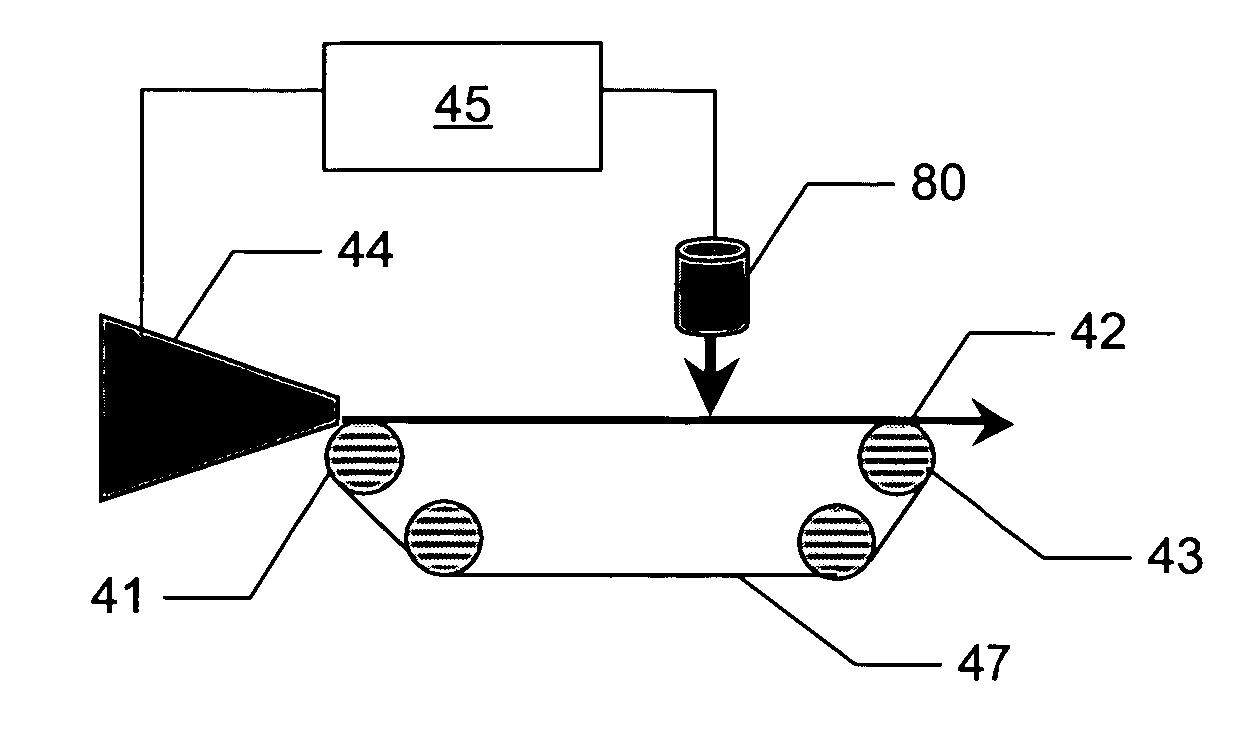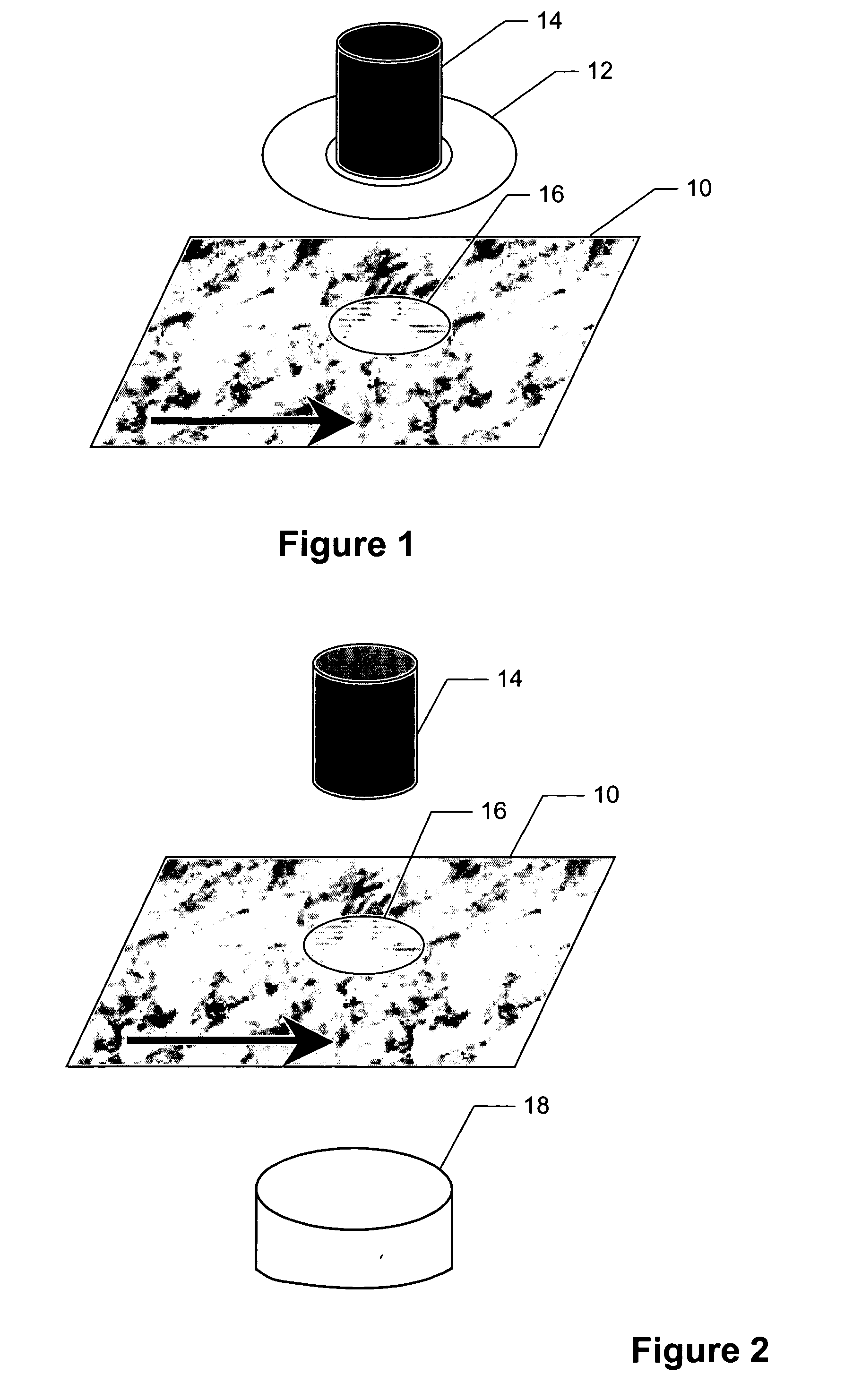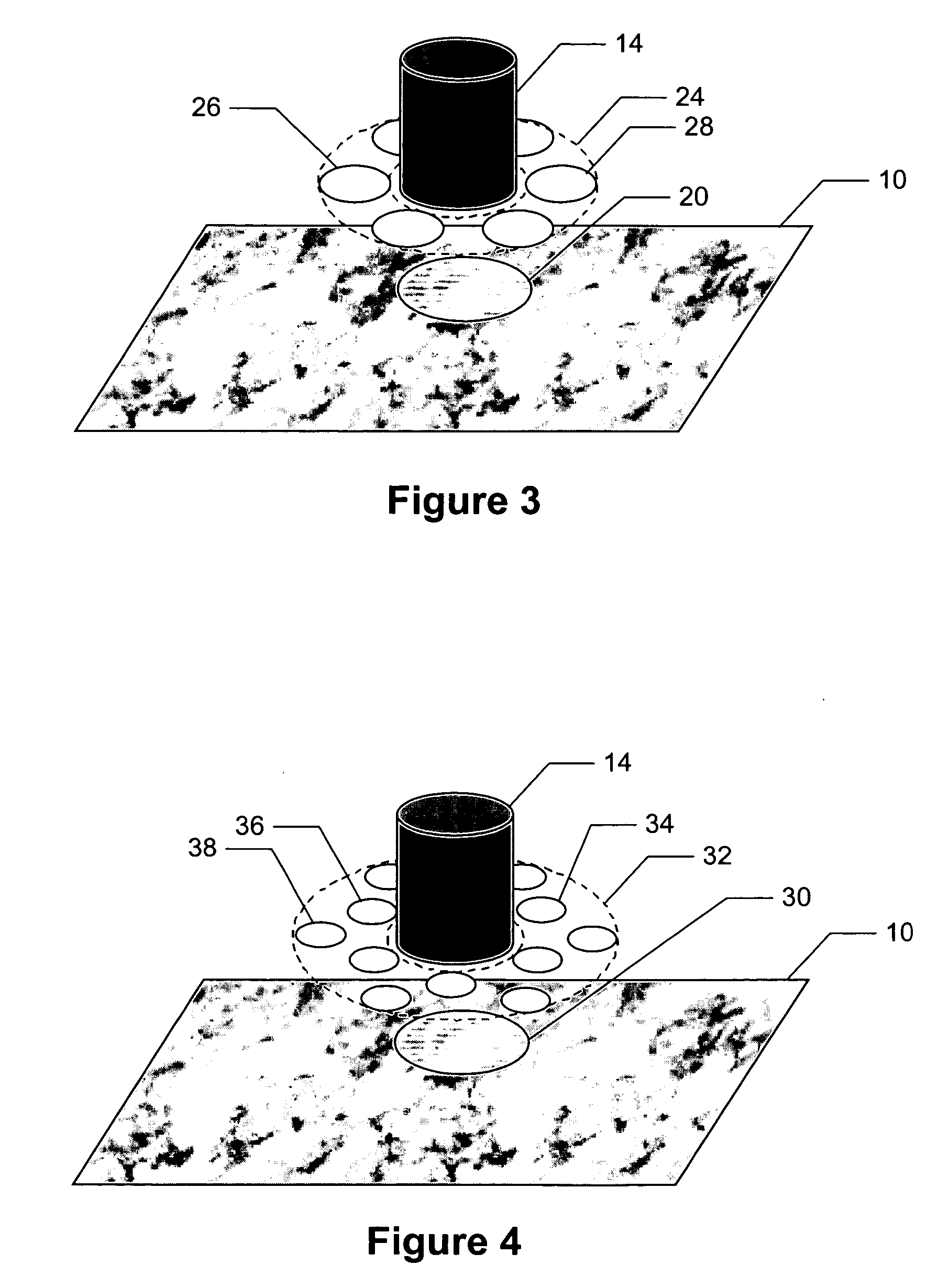Method and apparatus for measuring fiber orientation of a moving web
a technology of moving webs and fibers, applied in the direction of instruments, papermaking, image enhancement, etc., can solve the problems of dimensional instability, twisting, curling, skewing, and defective products, and achieve the effect of robust estimation of the statistical distribution of fibers
- Summary
- Abstract
- Description
- Claims
- Application Information
AI Technical Summary
Benefits of technology
Problems solved by technology
Method used
Image
Examples
Embodiment Construction
[0034] The present invention relates to methods and devices for directly measuring the fiber orientation in nonwoven materials especially where the material is in the form of a moving web, film or sheet. The fiber orientation of the whole thickness of the web or just the surface of the web can be measured. The fiber orientation measurements can be expressed as one or more different parameters that are used in controlling the papermaking process and / or characterizing the properties of the product. The parameters include, for instance: average fiber orientation angle, fiber orientation anisotropy index, and statistical distribution of fiber orientation angles. In addition, the fiber orientation measurements from both sides of the web can yield information regarding curl and twist deformations of the web, e.g., paper.
[0035] The analysis method employs fractional-order gradients that are evaluated on at least two preferably orthogonal axes at a plurality of loci in the digital images o...
PUM
| Property | Measurement | Unit |
|---|---|---|
| width | aaaaa | aaaaa |
| angle | aaaaa | aaaaa |
| diameter | aaaaa | aaaaa |
Abstract
Description
Claims
Application Information
 Login to View More
Login to View More - R&D
- Intellectual Property
- Life Sciences
- Materials
- Tech Scout
- Unparalleled Data Quality
- Higher Quality Content
- 60% Fewer Hallucinations
Browse by: Latest US Patents, China's latest patents, Technical Efficacy Thesaurus, Application Domain, Technology Topic, Popular Technical Reports.
© 2025 PatSnap. All rights reserved.Legal|Privacy policy|Modern Slavery Act Transparency Statement|Sitemap|About US| Contact US: help@patsnap.com



